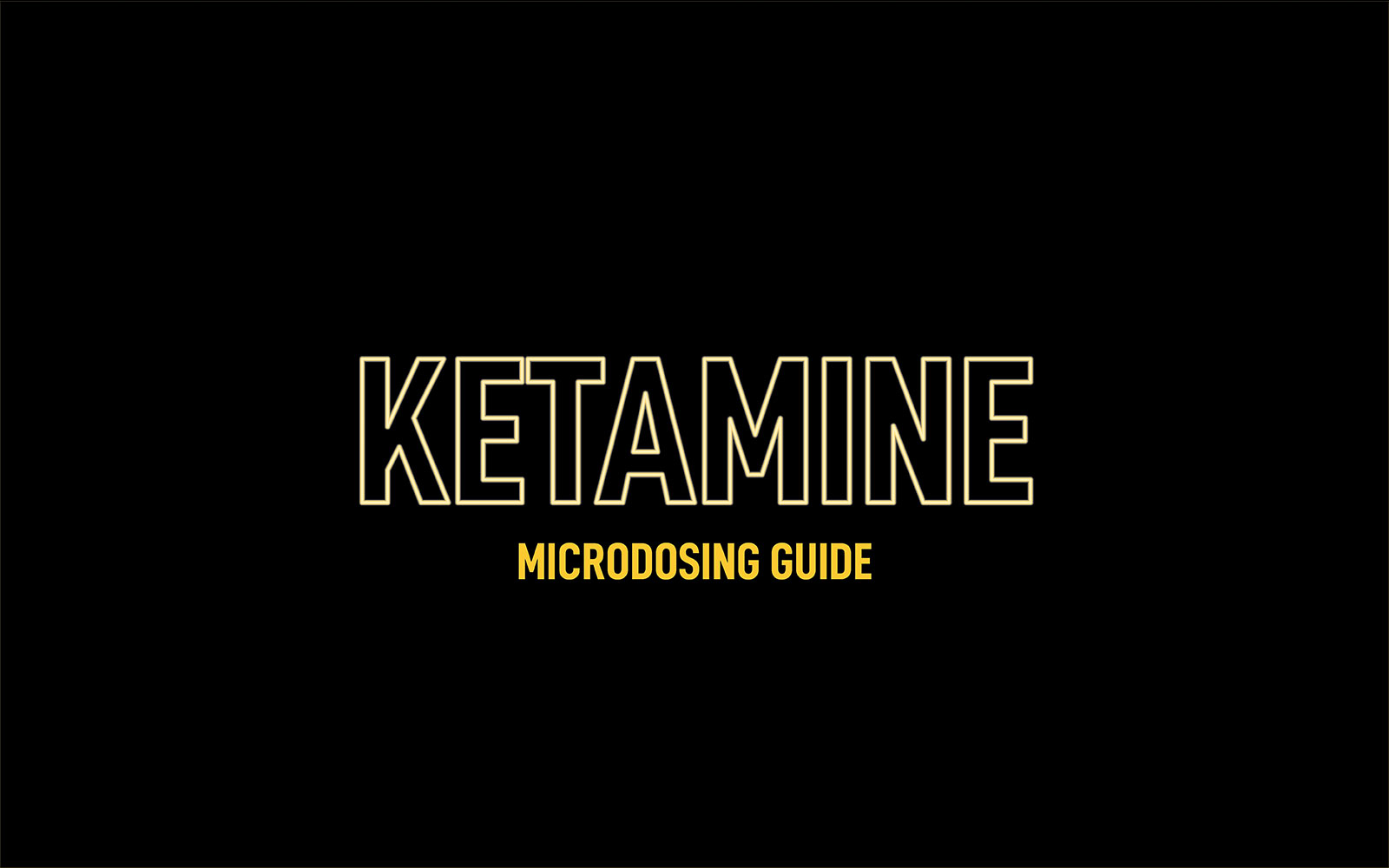Microdosing Ketamine & Common Dosages Explained
Microdosing ketamine is currently being studied alongside full doses of ketamine for its potential as a fast-acting anti-depressant.

The solution has a specific milligram per milliliter concentration. This produces a rapid onset of effects that are almost immediately noticeable. Due to the wide range of uses for ketamine, from an anesthetic to a fast acting anti-depressant, clinical doses have an extremely large range. When studied as a fast acting anti-depressant, most clinical research uses between 0.1 mg/kg to 0.75 mg/kg. Most often they administer the doses across 40 minutes. However, administration times can be as short as 2 minutes or as long as 100 minutes. Both anecdotal evidence from the psychedelic community and scientific research shows high potential for microdosing ketamine as a fast acting anti-depressant along with various other benefits. It works by binding to the NMDA receptors acting as an antagonist at the dizocilpine site. Once bound, this prevents glutamate and glycine from binding in this location. When applied in small quantities, microdosing is thought to increase the movement of information from the brain to the affected neural networks. This potentially explains how ketamine is able to act as a fast acting anti-depressant in patients with treatment resistant depression. Typical microdoses of ketamine consist of approximately 0.1 mg/kg consumed intranasally. When taken in a medical setting its often administered intravenously to ensure the patient consumes the full recommended dose. Doses are typically administered over the course of five distinct sessions. One ketamine researcher recommends spacing out these sessions by at least two days to allow for the full effects of each session. This individual also recommends using the restroom prior to each session as using ketamine can result in a loss of bladder control. Further, the FDA already approved esketamine as a nasal spray in March of 2019. This nasal spray administers microdoses of esketamine, one of ketamine’s stereoisomers.
The largest known risk with consuming ketamine on a regular basis is its potential to cause lower urinary tract symptoms.
These symptoms involve white cysts and blood within the lower urinary tract, as well as a loss of bladder control. It seems that these symptoms have a stronger association with people who recently used ketamine. Meaning, the symptoms may reside once an individual stops using the substance. Out of 18,802 participants, 30% of individuals who consumed ketamine in the last 6 months reported having lower urinary tract symptoms. Individuals who had never consumed ketamine, 24% reported symptoms, and individuals who had once consumed ketamine, 28% reported symptoms. Current studies suggest ketamine may also cause neurotoxicity at high doses. This in vitro study on the effects of ketamine administered to neurons suggests ketamine does not cause neurotoxicity at low doses.
They state that “lower dose ketamine treatment for 24 hours did not influence the overall cellular morphology.” However, large doses of ketamine caused cellular projection retraction and cell detachment. Common effects of microdosing ketamine may include: One ketamine researcher who successfully helped alleviate the symptoms of two individuals; one suffering from chronic major depression and the other from seasonal affective disorder, explains in detail their method of treatment.
They recommend a dosage of approximately 0.1 mg/kg consumed five times throughout each of the five sessions. Once every ten minutes, a patient takes this ketamine dosage during the therapy session. Each session is recommended to be spaced out by two days. However one could get treatment everyday for five days, if the patient is in a stress-free environment.
The results of these sessions produced profound impacts on each individual’s life. This treatment relieved the symptoms of the individual suffering from chronic major depression for two months. Some of these effects lasted as long as 6 months.
The individual with seasonal affective disorder reported their issues simply vanished for the entirety of the winter. A follow up has not been conducted as to whether or not their symptoms re-appeared the following winter. Mixing any ketamine dosage with alcohol puts unnecessary stress on the liver as they are both metabolized by it. Stimulants mixed with ketamine can cause dangerously high levels of blood pressure due to the addictive effect on blood pressure. Opioids mixed with ketamine enhance each other’s sedative effect, so most recommend avoiding the combination.
There are a wide range of other substances that can enhance ketamine’s effects, primarily CYP3A4 inhibitors and CYP2B6 inhibitors. This is due to the way they increase plasma concentrations of ketamine caused by the inhibition of its metabolites. Common CYP3A4 and CYP2B6 inhibitors include diazepam and orphenadrine respectively. Generally speaking, an overdose occurs when a user consumes a toxic amount of a substance or mixes substances that overwhelm the body. A common measurement of toxicity determines the median lethal dose of a substance, known as the LD50, or Lethal Dose, 50%. Every single substance has an LD50 from water to snake venom.
There is an amount of any substance that can cause harm. Studies suggest the LD50 for ketamine is upwards of 600 mg/kg. For an average adult weighing 70 kilograms, or 150 pounds, this would be a dose of 4.3 grams. This means one would need to consume over 17 times the highest “k-hole” dose or 86 times a standard dose prior to reaching ketamine’s ld50.
Read the full article at the original website
References:
- https://www.principiumpsychiatry.com/iv-vs-oral-vs-intramuscular-vs-intranasal-ketamine-why-route-matters/
- https://www.ncbi.nlm.nih.gov/pubmed/28749092
- https://www.ncbi.nlm.nih.gov/pubmed/29537989
- https://www.ncbi.nlm.nih.gov/pubmed/23474358
- https://www.ncbi.nlm.nih.gov/pmc/articles/PMC3684944/
- https://www.ncbi.nlm.nih.gov/books/NBK541087/
